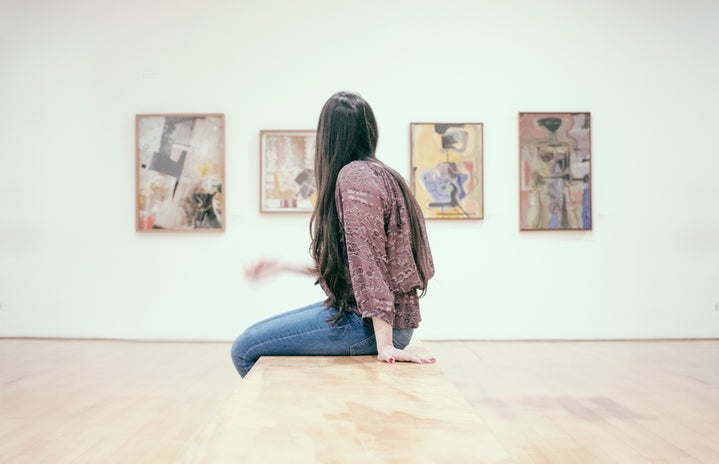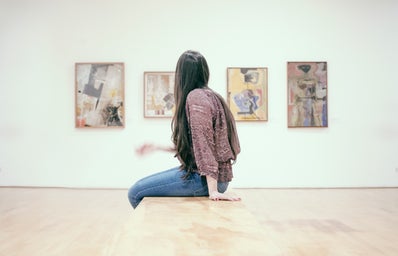The Her Campus National Editors write about products we love and think you’ll love too. Her Campus has affiliate partnerships, so we get a share of the revenue from your purchase. All products are in stock and all prices are accurate as of publication.
São Paulo is the largest city in Brazil, and it is known for its vibrant cultural scene. One of the best ways to explore the city’s rich cultural heritage is by visiting its museums. While many tourists visit the well-known ones like the São Paulo Museum of Art or the Museum of the Portuguese Language, there are several other lesser-known museums that are equally fascinating. In this article, we will explore eight museums in São Paulo that you might not have known existed, but should definitely visit.
- Museu do Futebol (Football Museum)
-
The Museu do Futebol is located in the Estádio do Pacaembu, a historic football stadium in São Paulo. This place is dedicated to the history of Brazilian football and its impact on the country’s culture. It features interactive exhibits, historical artifacts, and multimedia installations that showcase the evolution of the sport in Brazil.
One of the most popular exhibits in the museum is the “Gol a Gol” installation, which allows visitors to experience the excitement of scoring a goal in a virtual football game. There is also a section dedicated to the legendary Brazilian football player Pelé, where visitors can learn about his life and career through interactive exhibits and multimedia presentations.
Another highlight of the museum is the “Sala das Copas” (Cup Room), which showcases the World Cup trophies won by the Brazilian national team throughout the years. The museum is open from Tuesday to Sunday, and admission costs R$20 for adults and R$10 for students and seniors.
- Museu da Casa Brasileira (Brazilian House Museum)
-
The Museu da Casa Brasileira is located in a beautiful mansion in the Jardim Europa neighborhood. The museum is dedicated to the history of Brazilian domestic architecture and design, showcasing the evolution of homes from the colonial period to the present day.
The museum’s collection includes furniture, objects, and decorative arts from different periods, as well as contemporary Brazilian design. This place also hosts temporary exhibitions that explore different aspects of Brazilian design and architecture.
One of the most popular exhibits in the museum is the “Prêmio Design Museu da Casa Brasileira” (Museu da Casa Brasileira Design Award), which showcases the best of Brazilian design in different categories such as furniture, lighting, and accessories. The museum is open from Tuesday to Sunday, and admission is free.
- Museu da Imagem e do Som de São Paulo (Museum of Image and Sound of São Paulo)
-
The Museu da Imagem e do Som de São Paulo (MIS) is located in the Jardim Europa neighborhood. The museum is dedicated to the preservation and promotion of Brazilian audiovisual culture, showcasing the evolution of film, music, and television in the country.
The collection includes a vast archive of audiovisual materials, including films, TV shows, music recordings, and photographs. The museum also hosts temporary exhibitions, film screenings, and concerts that expose different aspects of Brazilian audiovisual culture.
One of the most popular exhibits in the museum is the “Acervo MIS” (MIS Collection), which showcases highlights from the museum’s audiovisual archive. The museum is open from Tuesday to Sunday, and admission costs R$20 for adults and R$10 for students and seniors.
- Museu da Língua Portuguesa (Museum of the Portuguese Language)
-
The Museum of the Portuguese Language is an interactive museum that is dedicated to the Portuguese language. The museum is located in the Estação da Luz, which is a historic train station in the heart of São Paulo. It was first opened in 2006, but it was severely damaged in a fire in 2015. After a long renovation, the museum was reopened to the public in 2020.
The museum features several interactive exhibits that explore the history, evolution, and cultural significance of the Portuguese language. Visitors can learn about the language’s roots, the differences between Portuguese and other Romance languages, and how the language has evolved over time. There are also exhibits that showcase the language’s influence on Brazilian culture, music, and literature.
One of the most interesting exhibits in the museum is the “Vocabulary Room,” where visitors can explore different Portuguese words and their meanings. The room features a massive wall with over 7,000 words and definitions, and visitors can use an interactive touchscreen to explore them. There are also interactive exhibits that allow visitors to learn Portuguese phrases and practice their pronunciation.
- Museu Afro Brasil
-
The Museu Afro Brasil is a cultural institution that showcases the history, culture, and art of African descendants in Brazil. Located in the heart of Ibirapuera Park, this museum boasts a collection of over 6,000 pieces, including sculptures, paintings, photographs, and historical artifacts. The exhibits explore the history of the African diaspora in Brazil, from the colonial era to the present day, highlighting the significant contributions made by Afro-Brazilian artists, thinkers, and activists.
The museum’s permanent collection is divided into four main areas: Africa, Afro-Brazilian religions, slavery, and contemporary art. The Africa section features objects and artifacts from various African cultures, including masks, textiles, and musical instruments. The Afro-Brazilian religions section explores the syncretism of African spiritual traditions with Catholicism and other belief systems in Brazil. The slavery section examines the history of slavery in Brazil and the experiences of enslaved Africans and their descendants. Finally, the contemporary art section features works by contemporary Afro-Brazilian artists who are shaping the cultural landscape of Brazil today.
In addition to its permanent collection, the Museu Afro Brasil also hosts temporary exhibitions and cultural events throughout the year, such as film screenings, concerts, and workshops. This museum is an essential destination for anyone interested in the history and culture of African descendants in Brazil.
- Museum of the City of São Paulo
-
The Museum of the City of São Paulo is a cultural institution that showcases the history and development of São Paulo, from its colonial roots to its modern-day status as a global metropolis. Located in the heart of the city, this museum boasts a collection of over 100,000 objects, including photographs, maps, documents, and artifacts that tell the story of São Paulo’s rich and diverse cultural heritage.
The museum’s permanent collection is organized around different themes, such as the city’s architecture, urban planning, and social history. Visitors can explore the museum’s collection of historical photographs and documents, as well as participate in interactive exhibits that explore São Paulo’s cultural and social diversity.
One of the most popular exhibits is the “São Paulo Experience,” an immersive multimedia installation that takes visitors on a virtual tour of São Paulo’s history and culture. This exhibit uses advanced audio and visual technology to recreate the sights and sounds of São Paulo throughout different eras, from its colonial past to its modern present.
- Museum of the Japanese Immigration and Japanese Culture
-
The Museum of the Japanese Immigration and Japanese Culture is a cultural institution that celebrates the history and culture of Japanese immigration to Brazil. Located in the Liberdade neighborhood, the heart of the Japanese community in São Paulo, this museum boasts a collection of over 97,000 pieces, including photographs, documents, artifacts, and works of art.
The museum’s permanent collection is divided into three main areas: immigration, culture, and Japanese-Brazilian relations. The immigration section explores the history of Japanese immigration to Brazil, from the first wave of immigrants in the early 20th century to the present day. The culture section showcases the richness and diversity of Japanese culture, including traditional arts, crafts, and costumes. Finally, the Japanese-Brazilian relations section examines the historical and cultural ties between Japan and Brazil and the contributions made by Japanese-Brazilians to Brazilian society.
Visitors to the museum can participate in a variety of cultural and educational activities, including workshops, lectures, and performances. The museum also hosts temporary exhibitions and cultural events throughout the year, such as the annual Tanabata Matsuri Festival, which celebrates the Japanese star festival.
The Museum of the Japanese Immigration and Japanese Culture is a must-visit for anyone interested in the history and culture of Japanese immigration to Brazil and the contributions made by Japanese-Brazilians to Brazilian society.
- Museum of the Sacred Art of São Paulo
-
The Museum of the Sacred Art of São Paulo is a cultural institution that showcases the art and religious traditions of colonial Brazil. Located in the former monastery of the Order of St. Benedict, the museum boasts a collection of over 18,000 pieces, including sculptures, paintings, liturgical objects, and manuscripts that reflect the history and spirituality of Brazil’s Catholic Church.
The museum’s exhibits are organized around different themes, such as the Baroque art and architecture of colonial Brazil, the traditions of popular Catholicism, and the history of the Benedictine order in São Paulo. Visitors can explore the museum’s collection of sacred art and artifacts, as well as participate in guided tours and workshops that explore the spiritual and cultural heritage of Brazil.
One of the museum’s most iconic features is the “Cruz dos Enforcados,” or “Cross of the Hanged,” a Baroque sculpture that depicts the crucifixion of Christ as a symbol of resistance against oppression and social injustice. It is a testament to the role of religion and spirituality in Brazil’s history and culture.The Museum of the Sacred Art of São Paulo is a must-visit destination for anyone interested in the art, history, and spirituality of colonial Brazil and its Catholic Church.
São Paulo is a city full of surprises, and its museums are no exception. From the hands-on exhibits at the Museu do Futebol to the intricate works of art at the Museu de Arte Sacra de São Paulo, there is something for everyone to explore.
These eight museums offer a glimpse into the diverse and vibrant cultural landscape of São Paulo, and we encourage you to add them to your list of must-visit destinations. So next time you want to get off the popular museums route in the city, be sure to take some time to explore these cultural treasures and discover the many stories they have to tell.
——————————————————————
The article above was edited by Juliana Sanches.
Like this type of content? Check out Her Campus Cásper Líbero for more.


